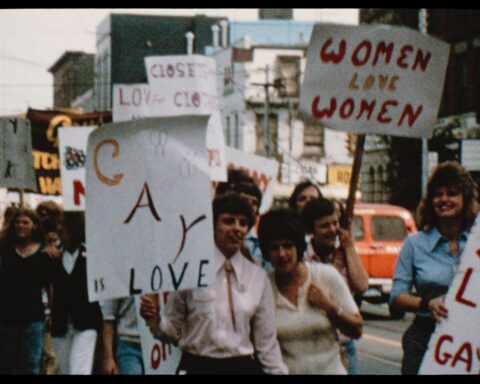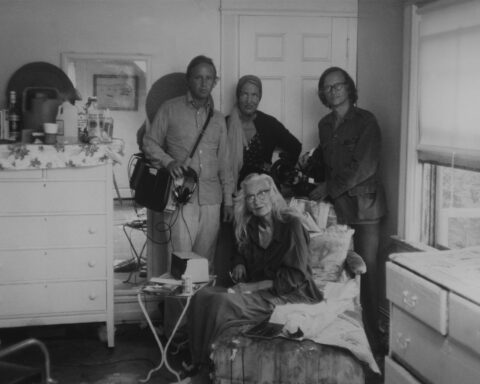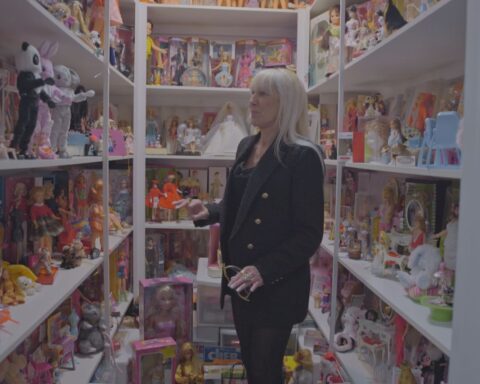You’ve spent years in development, courting funding, networking at festivals and industry conferences. You’ve cultivated interview subjects and/or actors. You’ve sourced and hired great crews. You’ve spent months or even years researching and refining a script and weeks in final edit.
You’ve invested much of your life in making a film.
You’ve also launched a suite of mostly “free” online promotional tools: a project-specific website; a Twitter feed; Facebook, Instagram and Vine accounts. You have 2,000 Facebook “likes.” You may even have hired a professional publicist. Yet your film seems scarcely on the public’s radar. How is it possible that having toiled for years on a film, you’re now stuck in promotional purgatory?
Unfortunately, immaterial of a project’s merits (although a good product helps), timely, skillful and targeted promotion plays a critical role. It may be the difference between success and obscurity, as well as the chance of getting another project off the ground.
Up until the last decade, with its explosion of social and other DIY media, film promotion was mostly something someone else did. Your role was Filmmaker. You were the Artist. So you were typically at a polite distance from the grimy task of promotion. You gave interviews and interacted with “media,” but the actual nuts and bolts of publicity—building “press lists,” courting reporters, soliciting reviews and begging for coverage—was conducted entirely by someone else. Your contact with the “public” was at an even greater distance, confined mostly to numbers: box-office receipts, television ratings, DVD and download sales.
In the past, publicity—especially once you obtained distribution— was also part of a company-led integrated marketing plan. An existing team of promotion professionals was assigned to your project, each with a specific area of expertise: marketing, advertising, sales or public relations.
If you had the resources, you may have hired an independent publicist to work with you and the distributor’s team to increase your odds of securing the best promotional real estate: major media placements in high-profile publications and interviews on radio and TV.
That was then; this is now.
Anyone with a camera, computer or smart phone can make a film today. To raise production money, you can bypass institutions entirely and go directly to the public via websites like Kickstarter and IndieGoGo. It’s also no longer uncommon to do theatrical bookings and other forms of distribution, from festival placements to managing download and DVD sales, on your own. And publicity.
Yet often, the professional journalists and top critics whom every filmmaker wants to reach feel uncomfortable dealing direct. Establishing a relationship (one of the cornerstones of public relations) creates expectations, and these media professionals must feel free to respond honestly to a film, even if that response is negative. They take conflicts of interest seriously and will go out of their way to avoid them. A separate publicist provides a desirable neutral buffer zone.
So ideally, you should hire a professional publicist or assign someone to represent you as a “beard” or go-between. If you can’t, tread lightly in any direct interaction, especially with high-profile professional media. Try to view the experience from their perspective and focus on authentic reasons why your project might be of particular interest. Be very selective about how and why you approach them.
Even if you’ve hired a professional publicist, what you do unsupervised and on your own—especially through postings on social media and funding websites—influences the overall public-relations outcome. And it might not be helpful.
Like film production, publicity has its own weird logic. It can be especially frustrating and fatiguing. Arming yourself with a general understanding of some of publicity’s elusive mysteries is a good way to get the most from your resources, no matter how scarce.
Here are some basics:
Who are you?
You may be promoting a film, but ultimately, you are the product.
This is a personality-driven business. What you say, and where, when and how you say it, has a huge impact on how the public ultimately perceives and receives your work. With so much more of the filmmaking process conducted in full public view, the promotional cycle begins when you decide to make a film.
How you present yourself to funders, broadcasters, distributors, audiences and media has a wide and potentially lasting impact. What you mention in interviews, how you describe your film, the clothes you wear, the photos and videos you post or distribute, all make an impression. What’s on the Web will remain there for anyone to view, read, share and criticize for eternity.
Find your niche.
There is more media and audience fragmentation than ever before.
Try to identify and learn as many specifics as possible about your anticipated audience(s). Research and focus your outreach efforts on media that influences these audiences. Target whom and what they trust for information or endorsements. Be honest. You may think you’ve made a film with a very wide appeal, but more specific potential audiences always exist. In promotion, there is no such thing as a general audience.
Take names.
Build and update media lists, everyone from mainstream critics to influential bloggers who are popular on Twitter. Break the lists down to a few discrete categories, particularly in terms of their audience demographics and deadlines. Long before your film is finished, reach out and start a “conversation” with bloggers and others who maintain self-generated media. At this juncture, go easy on the self-promotion. Your aim is to develop a relationship for future, presumably mutually supportive use. If you are doing your own publicity, avoid using this particular tactic with high-profile film critics.
Prioritize.
Be aspirational but also realistic. Aim high but don’t be reluctant to aim low as well. Exploit your messengers, your friends and their friends to spread your news. If you are working with a professional publicist, name your dream media placements even if they seem unattainable or especially if you believe they are. And then listen. All media coverage is not created equal. The media outlets you desire may not be the best or most effective ones to reach your audience(s). These professionals understand the slings and arrows of PR. They believe your film has a chance of being successful or they wouldn’t take it on.
Spin.
How you sell your film to “professional” investors—broadcasters, granting organizations, institutions—may be very different from “selling” your film to media, potential audiences or public investors. You need to frame your project in a way that will resonate with these audiences, and there may be several different ones. Consider the various news angles you might emphasize to intrigue the individual audience sectors you wish to attract. This holds true whether you want people to see your film in a theatre or give you money to make it.
Language is a trap.
Use words that engage, yet are difficult to misinterpret. If your pro-motional materials depend on the lexicon of the moment or buzzwords to “connect” with a particular audience, you risk becoming confined to that moment forever. Your audience may lose interest but your publicity materials will endure. Consider the future when creating them.
Explain acronyms.
Assume a need for some fundamental background information. No one else is as interested or knows as much about your film as you. But keep it lively, topical and brief.
Use keywords whenever possible in your online promotion.
They will increase your film’s visibility through easy discovery in RSS (Real Simple Syndication) feeds and Web searches for similar topics.
Always include pertinent information.
Who, What, When, Where and Why. Don’t expect anyone to search your website or your last email to learn your release date.
Show rather than tell.
When pitching specific media outlets for any kind of coverage—reviews, feature stories, interviews—try to remember that their objectives are different than yours. They, too, have an audience they wish to satisfy. Your enthusiasm about your film may seem meaningless to them. Demonstrate through the content of your promotional materials and pitches why your film is “exciting, awesome, groundbreaking.” Publicity pitches have dramatic arcs, too.
Create blocks of text that can be easily recycled.
If you need to send promotional batch e-mails, keep the batches small or they will end up in spam. It’s better to send individual pitches even if you reuse much of the content you’ve sent elsewhere.
Spell-check will not save your ass.
Make sure you correctly spell the names of those to whom you are pitching, as well as your film’s key players.
Be flexible.
The Web’s “infinite now” has reduced the news cycle to a nanosecond. Getting and keeping the media and public’s attention requires as much strategy as getting your film made in the first place. There will be sudden opportunities and/or setbacks you can’t plan for. An opportunity might be the subject of your film suddenly having a broader cultural appeal because of something in the news or in the zeitgeist. A setback could be multiple films that explore similar subject matter released around the same time. If you are a clever and nimble promoter, both situations may be used to your advantage.
Your movie’s release date has a huge impact on coverage.
Timing is complicated, as you may not have control over it, especially if you are working with a distribution company. If your film is being released at a crowded time of year, make sure you focus your outreach on media that you have sufficient time to court. You need to contact long-lead-time or major media three to six months prior to release if you want coverage. Even if your film is not yet completed, pull a long clip that may be shared on Vimeo or another secure-access website for reporters to view.
Lead with your strengths.
Take a realistic inventory of what you can do, are willing to do, have time to do and are good at doing. Create a publicity schedule extending to your film’s release. Include dates for creation, approval and distribution of promotional materials, specific media deadlines and other pertinent items. Identify costs, if possible. Then decide what you can actually accomplish.
Be patient but persistent.
Successfully getting coverage, whether it’s in mainstream newspapers or in specialty blogs, requires tenacity. If you’re not getting a response to a pitch, wait awhile and graciously pitch again, offering alternative news angles. Don’t bother opening your pitch with a “Hi, how are you,” especially if you have no established relationship. Get to your news angle in the first or second sentence. Anticipate never hearing from many of the folks you pitch, no matter how interesting your content.
You have no control over what people eventually write or report.
Ditto for reviews. Try not to take it personally, even though you are the product.
Social media popularity does not equal revenue.
Don’t be complacent. Participating in social media is easy. Parting people from their time and money is hard. As a filmmaker, what you post or share is a direct reflection of your talent. It is a brand extension of your work, so it has to be polished and good. Offer non-exclusive video clips and photos, as well as a bit of special content for your friends and fans to share. Choose the social media sites you can realistically support. Set a schedule for updates and keep it. It’s great to be everywhere, but if you are not updating frequently, folks will look elsewhere for their entertainment and enlightenment.
Take production photos!
They are your film’s most valuable promotional asset. Grabbing a frame from your film later is not good enough. Try to capture at least a dozen or more meaningful high-resolution photographs on set. Many filmmakers use photographers with fine art inclinations to take production stills. Big mistake. Hire a photographer who will be pleased to take pictures that have strong composition with a recognizable focal point, good contrast and crisp focus—someone who will take direction from your publicist… even if that person is you.
These are but a few obvious publicity basics. Like the art of filmmaking, there are many other moving parts and subtler insights to great promotion. Yet these publicity secrets are frequently revealed only through experience. So whenever possible, hire a professional. You’ll be glad you did.
More Publicity Tips
I canvassed publicists who represent independent features and documentaries in Canada and the U.S. Here is some of their advice, especially what you need to know if you plan to hire a professional.
Virginia Kelly
VK & Associates, Toronto
At the helm of VK & Associates for 20-plus years and as the publicist for the Hot Docs festival since 2000, Virginia Kelly has worked on promoting many documentaries in the Toronto and Canadian marketplace.
Here are some tips that guide me in promoting documentaries:
- If you want to hire a publicist, take meetings until you find a comfortable fit. You’ll need to be “living together” for a while, and a good relationship makes the job a lot easier and productive for everyone.
- Position your film and remain consistent in your messaging and press materials. This applies to any stage, but once you’ve sold your film to a distributor or broadcaster, they may advise you to alter the positioning. They know their markets best and are often correct.
- Find the ‘hooks’ in your subject matter. Visualize how a web or print story on your film will read, what images will accompany it, what the headline should be. What do you see yourself, your subjects and experts saying in a television or radio interview? What clips do you see them playing from your doc?
- Most docs are issue-oriented. A publicist needs to be educated on the issues and players in your film that you may have spent years learning. Any controversies surrounding the issues or your particular take on the issues. Any relevant context (i.e., how your doc fits into the big picture, what ‘stand’ your doc takes on a subject).
- Wherever possible (and I know there can be challenges for doc-makers on this point), make key subjects from your film available to the media.
- Don’t be inflexible you’re your strategy. The marketplace changes and the issues your doc addresses can change during the life of your film.
Sophie Gluck
Sophie Gluck & Associates, New York, NY
Recent and upcoming films include: A Separation, Amour, The Past, In the House, Stranger by the Lake, Young & Beautiful.
From the point of view of a boutique PR firm, I have the following suggestions:
- Before contacting a bunch of PR agencies, you should do some background research about what type of films the publicists you are contacting specialize in. This will help you narrow down the possibilities of who might be the best fit for your film instead of casting your net too wide and wasting time.
- Once you have made a deal with someone, it’s best not to try to micromanage the publicist’s efforts. Trust that they have your best interest in mind. It’s OK to make suggestions and brainstorm, but it’s best to keep boundaries as pushiness can backfire.
- At a film festival, don’t expect extensive coverage. If your film receives it, great, but you want to save your coverage for your release, whatever the platform.
John Murphy
Murphy PR
MURPHY PR has steered the campaigns for dozens of successful theatrical releases and devised numerous film festival strategies.
- Social networking: It is key to create your social-media feeds early and keep updating as you go through production. The more likes/friends you have when you finish production the better—it is as much an asset as art, trailers and all the rest.
- Art/clips: A single iconic still image can be invaluable, especially early in the campaign. It is best to go over your shot sheet and figure out when that image may occur, either in front of the camera or slightly staged. It’s important to build time into the production schedule for photos.
- Digital assets: Exclusive trailers, clips and art are de rigueur for any film campaign these days. You should be careful about rushing to post clips on YouTube, Facebook, etc. when they may have value as an exclusive to media sites like Deadline Hollywood, Indiewire, ew.com or others.
Susan Norget
Susan Norget Film Promotion
Recent campaigns include: Blue is the Warmest Colour, The Act of Killing, A Touch of Sin and The Square.
- Don’t choose to work with a publicist just because you like them and they’re enthusiastic about your film. What counts is not only that they genuinely like it, but also that they really understand it and can frame and position it in an intelligent and thoughtful way.
- When talking to potential publicists for your film, don’t be shy about asking for filmmaker references, especially as you may have questions about the publicist’s approach or work style that can’t be broached directly with them. I actively want prospective clients to ask filmmakers I’ve worked with about their experience.
- Images are one of the key marketing elements for your film and should never be an afterthought. Limit the number of stills you use at film festivals to a small number (no more than a few) of only the very strongest images (you can save others for a later theatrical/VOD/broadcast campaign). The festivals in which you launch your film offer an opportunity to visually “brand” your film, and quality always trumps quantity. In addition, don’t forget to get a good director’s portrait shot done, if only a nice, casual shot taken by a friend.
Adam Walker
Premieres publicist at Film Forum, New York, NY.
- Make key art a priority from pre-production forward: Unit photography is crucial. The placement and impact of reviews and features in print and online media depend largely on how visually striking the images associated with the film are, and photo editors do not appreciate blurry frame grabs. This is true for both narrative and documentary films. In my experience, documentary filmmakers most often struggle with a dearth of good art, and coverage suffers when the time comes to promote the film.
Julia Pacetti
JMP Verdant Communications
JMP Verdant, a leader in the promotion of current affairs and issue-oriented documentaries, is a full-service communications firm specializing in the creation and execution of customized media strategies for film, television and political impact campaigns. The company has led campaigns for a vast array of political film projects and documentaries, including 5 Broken Cameras, Hell and Back Again, The House I Live In, The Island President, The Most Dangerous Man in America and The Oath.
- Many filmmakers we work with are managing their own distribution and have chosen to retain the rights and the total potential monetization of their work. If you go this route then you are the master of the release of the film, and you need to set a schedule for that release.
- You’ll need to create a very specific plan and strategy, and if you don’t know how to do it there are many qualified people who can help – your job is to find them and assemble a good team. Three to six months’ lead time is ideal for launching the media campaign and for issuing an opening-day announcement in order to put your film on the major editorial calendars.
- Filmmakers are the masters of the ship when they are making movies, but when they move into the distribution phase, they’ll need to delegate by putting together a distribution and marketing team they really like and then empowering them.
- Choose your publicist wisely. We are always making sure deliverables are in place for major screenings, we are the single point of contact for talent, we contribute to the pull-quote process for advertising, feed social-media teams with articles, collaborate on strategy for key art and trailers, deliberate the right time of year for film releases, handle award-season submissions and screenings, choose photography and, of course, we write the materials that shape the whole campaign.












